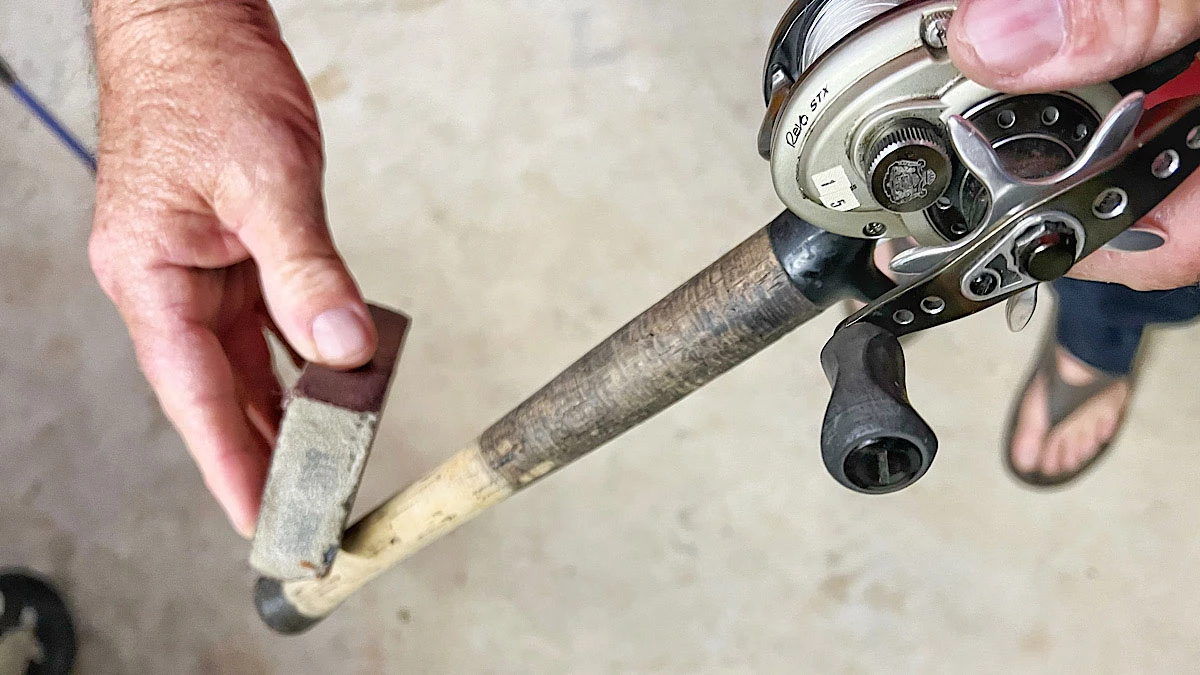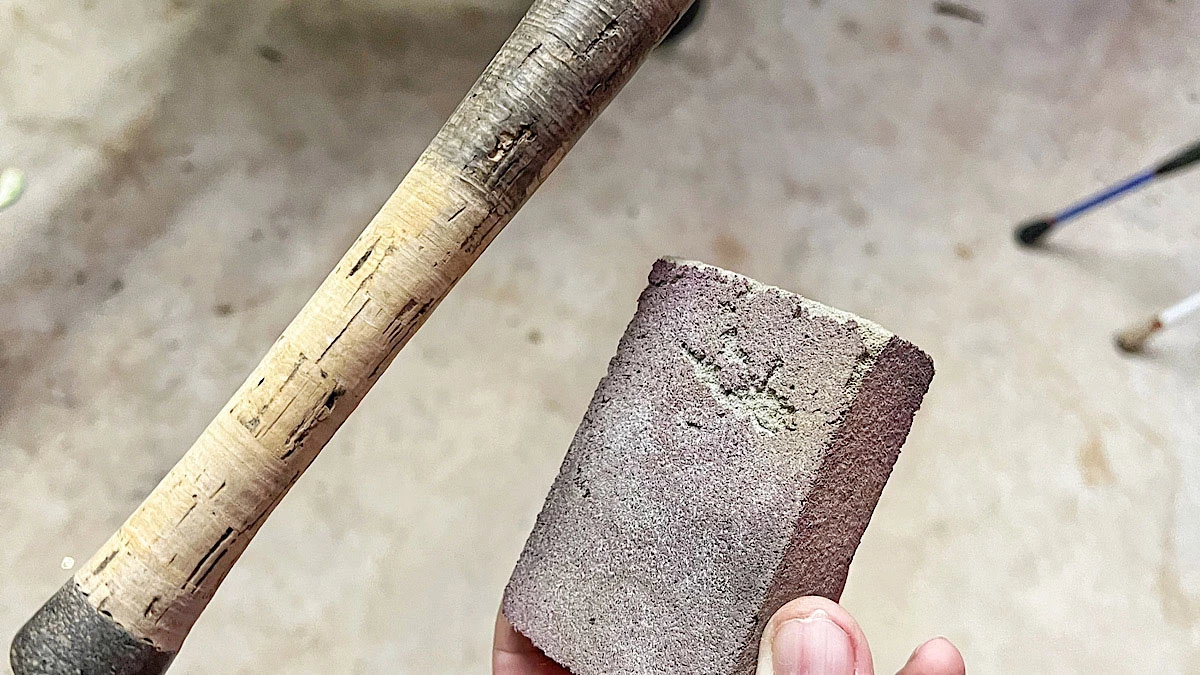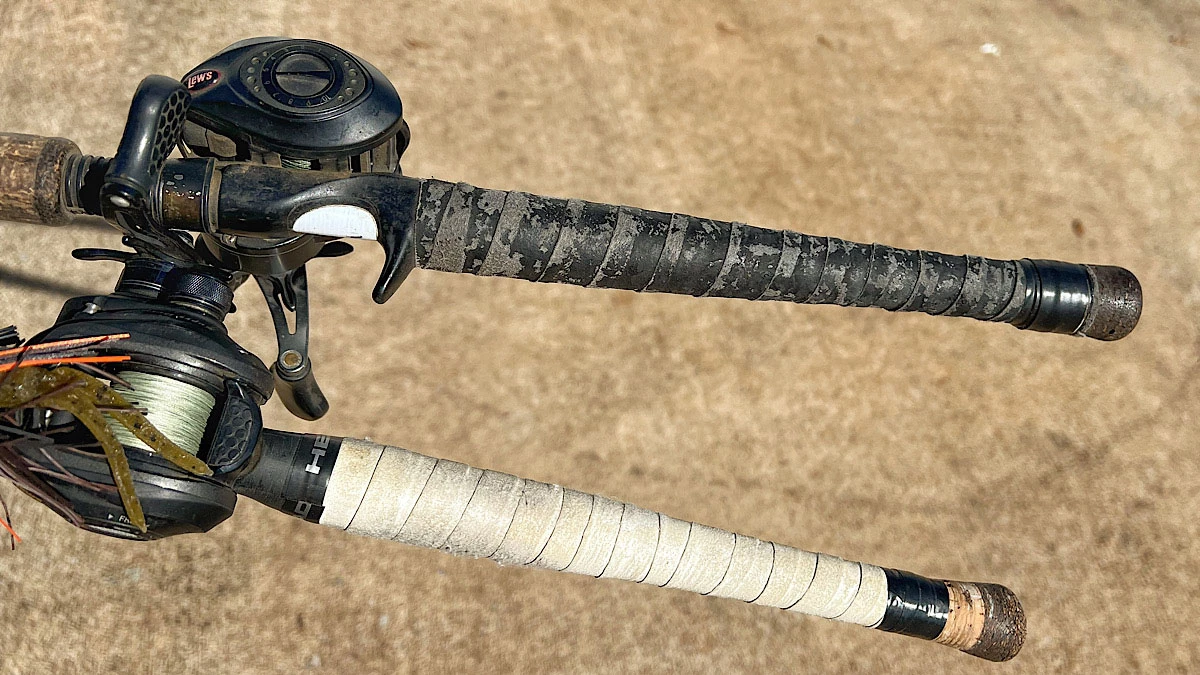There is an unknowable number of bass fishing rod options on the market today. As this number continues to rise, it seems like the overload of options is actually making it harder to pick the perfect rod for a specific purpose, not easier.
As a result of this, when I find a rod I really like for a particular technique, I tend to stick with it for a long time. Finding a favorite and faithful rod that I can really depend on is only part of the equation though. Regular wear and tear from extended use starts to show overtime, causing little blemishes to the appearance of the rod or even issues that could effect its performance.
If you find yourself in a similar situation needing to maintain an older rod that you’re particularly fond of or if you’re just a fan of bassin’ on a budget and want to spruce up a used rod that you’ve acquired, here are four ways to get new life out of an old rod.
Sand the grip
Most older rods (and many you can buy new today) have cork handles. Cork is a fairly inexpensive, easy-to-work-with material that lots of rod manufacturers look to when designing the grip of a rod. This material is relatively soft, making it comfortable to hold for extended periods of time. But its porous surface collects grime and can leave a rod handle looking really nasty.
With a simple piece of fine-grit sanding paper or a sanding block, you can quickly knock that layer of grime off a cork handle and make it look all but brand new again. This is something dad has been doing with older rods of ours for several years now. It’s surprising the subconscious confidence boost that’s generated from reaching down to pick up a clean-looking rod off the deck as opposed to an old, crusty one.
It kind of comes back to the old adage that you hear from a lot of athletes or even business people about why they dress a certain way—if you look good, you play well. And if you go to sell an older rod, you’ll be able to get a considerable amount more for it by taking just a couple minutes to freshen up the handle.
Replace eyes and tips
Short of slamming a rod in a car door or the compartment lid of your boat, the most likely thing to fail first on almost every rod on is one of the rod guides. Most rods have somewhere in the realm of a half dozen to a dozen guides, including the tip. So there’s a lot of opportunity for a guide to snap off, an insert to pop out or an acrylic guide to chip and cause damage to your line.
In all of these instances, it’s a good idea to replace the rod guide all together. For many of us, there’s likely a custom rod builder fairly close by that will do this for around $5 a guide. But if you can’t find anyone or just want to do it yourself, it’s very easy to do with a few basic things you already have around the house.
You can go out and purchase thread and resin specifically designed for this purpose, or you can just grab some sewing thread, braided line or even dental floss and a tube of super glue and you have all you need to get the job done. For a more in-depth tutorial on how to do this, click here.
Tennis racket tape
This next tip can really be used to enhance almost any rod, but especially to spruce up an older one. As rod handles and grips wear down over time, they can become slick and even too thin to grip comfortably. Cork grips and EVA foam grips in particular can become slick too as they get wet.
Trying to develop a better grip in a wet environment is a hurdle tennis players had to overcome a long time ago. Swinging a tennis racket as hard as you can with a sweaty palm can lead to a black eye three rows up in the stands. I don’t claim to know much about tennis, but I’m pretty sure that’s not the desired outcome of a match.
This being a common issue for tennis players to address means you can find really affordable grip tape at almost any sporting goods store or section. Wrapping this tape around an old rod handle will boost your rod’s performance dramatically.
A coat of protection
Once years of use really start to pile up, the finish on a rod may begin to crack, chip, peel and flake off. If you have an older rod that’s starting to shed its skin, you can touch it up with some sort of coating. There are several schools of thought here and what you use really comes down to how much you want to spend and how long you want this DIY project to hold up.
There are times when just a little dab here and there can patch up a rod. But if the finish is extreme disrepair, you’ll likely need to remove the old finish before you do anything else. You have to be very careful doing this so that you don’t damage the actual fibers of the rod blank itself. I must admit that I’ve never refinished an entire rod myself, but I did find this extremely informative article if you’d like to take on a larger task like this.
You may be looking to simply improve the looks of an old rod by sprucing up the finish of the rod blank or knocking a bit of the grime off the grip. Or perhaps you’re needing to make more functional improvements like replacing a rod guide or adding grip tape to the handle. Either way, hopefully you can use one or multiples of these simple tips to help your old rod catch its second wind.
















